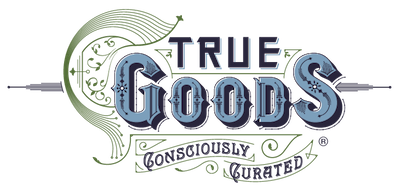People and their pets have a special relationship.
If you’ve got any, you know what we’re talking about. It’s what makes you break out the baby talk anytime you see them. It’s what lets you forgive them after they pee on your bed for the umpteenth time. If you’ve never had pets, it’s a relationship you might find absolutely baffling from the outside.
So when we say that your pet’s food bowl might contain toxins, the pet-free might not understand the big deal. After all, these are creatures known to sometimes eat their own poop. The rest of us just want what’s best for our best friends. Making sure their dishware is safe and sanitary is a simple step that helps them to live longer and healthier lives.
Here's a breakdown of common pet bowl materials and which ones are safest:
Avoid ~ All Plastics
Plastic is a popular option for food bowls. It’s sturdy, lightweight, and it doesn’t make a ton of noise on the kitchen tile. However, there are many concerns about the safety of using plastic around food, and those concerns don’t disappear just because you’re four-legged and furry.
First, plastic is easy to scratch. Little nooks and crannies in the surface of a food bowl make excellent breeding grounds for bacteria, which are not easily eradicated with a good scrub. In fact, the scrubbing may lead to more scratches and exacerbating the problem.
Also, plastics are known to leach harmful chemicals into their surroundings, including food served in plastic dishes. These chemicals include bisphenol-A (BPA) and phtalates, both of which are known to disrupt hormones.
Questionable ~ Silicone, Plant-Based, Stoneware/Ceramic
Silicone: Recently, more silicone dog bowls have been hitting the market. These tend to be less sturdy than their plastic counterparts, and many are made specifically to be collapsible for easy travel. While the FDA has approved silicone for use around food, the inherent squishiness of silicone makes it easier to chew up. Silicone is reported to be inert and nontoxic to the body, but if ingested it could obstruct the digestive system.
Plant-Based: Following the success of plant-based biodegradable plastic-ware for humans, companies have been releasing disposable pet bowls made of plants such as corn, bamboo, and sugar cane. While it’s great that these bowls are biodegradable, they run into a lot of the same problems as the silicone options.
Plant-based disposables are easily breakable, and while non-toxic, shouldn’t be ingested in large quantities. The verdict? Silicone and plant-based dishes are fine for short-term use with more mild-mannered pets, but probably not great for an everyday bowl.
Stoneware/Ceramic: Nothing says sturdy like earthenware. With these bowls, there’s certainly no risk of your pet chewing them to pieces. Also, because stoneware and ceramics are glazed to be non-porous and watertight, they are easy to clean and sanitize.
Unfortunately, a 2009 study by HealthyStuff.org found that many stoneware and ceramic pet bowls contained high levels of lead. This is often attributed to the same glazes that help keep the bowls watertight.
Oftentimes, manufacturers of products intended for use with food will make sure to use lead-free glazes, so with a bit of research it is possible to get a safe stoneware or ceramic bowl for your pet. Just make sure to check the bowl for chips or cracks every so often to make sure your pet is not ingesting any glaze or cutting themself on sharp edges.
Safe (with Precaution) ~ Glass, Stainless Steel
Glass: People concerned with the safety of their plastic-ware have generally turned to glass as a safe alternative. Glass generally does not contain lead (though crystal might) and doesn’t require the use of glaze. There aren’t a ton of glass pet bowls on the market, but if you can find one that doesn’t seem too fragile, they are a great choice.
Stainless Steel: Generally speaking, stainless steel bowls are widely seen as the safest option. They are just as sturdy as stoneware and glass without the possibility of shattering when dropped. They’re also non-porous, easy to clean, and non-leaching. However, there have been reported instances of radioactivity found in dog bowls sold in the Chicago area. The levels were low enough not to pose an immediate health risk, but a lifetime of use certainly would not have been beneficial.
So what should you do if you want the safest bowl for your pet?
- If you’re concerned about a stainless steel bowl you’re considering, call the manufacturer and ask if their bowls are lead-free and tested for radiation.
- Take matters into your own hands by purchasing a radiation detector or lead tester.
- Check with the database at HealthyStuff.org to find products that have already been tested and verified for safety.
- DIY. Create a personalized ceramic bowl for your pet. This way, you can verify for yourself that the glazes you use are food-safe and lead-free.

